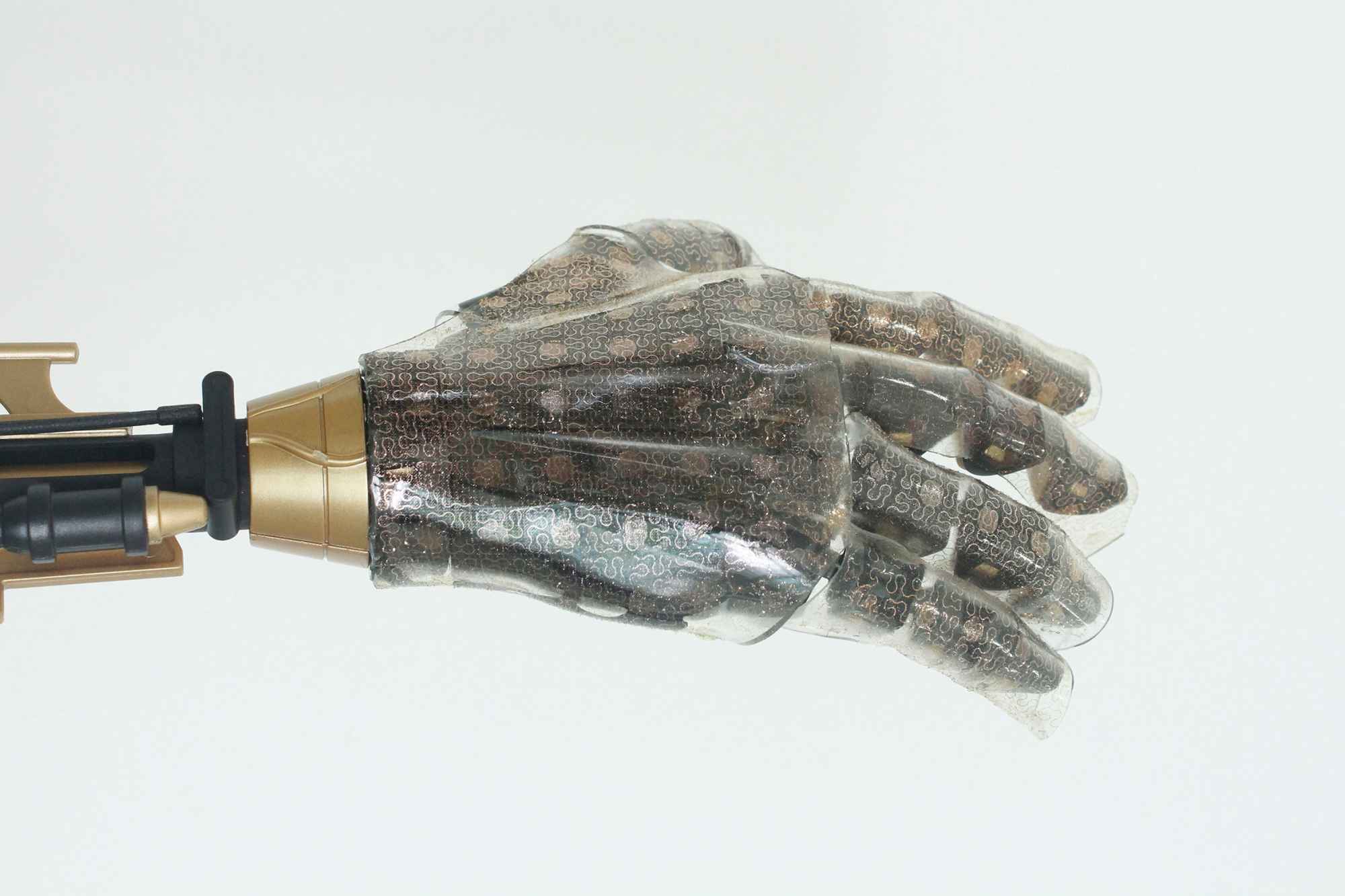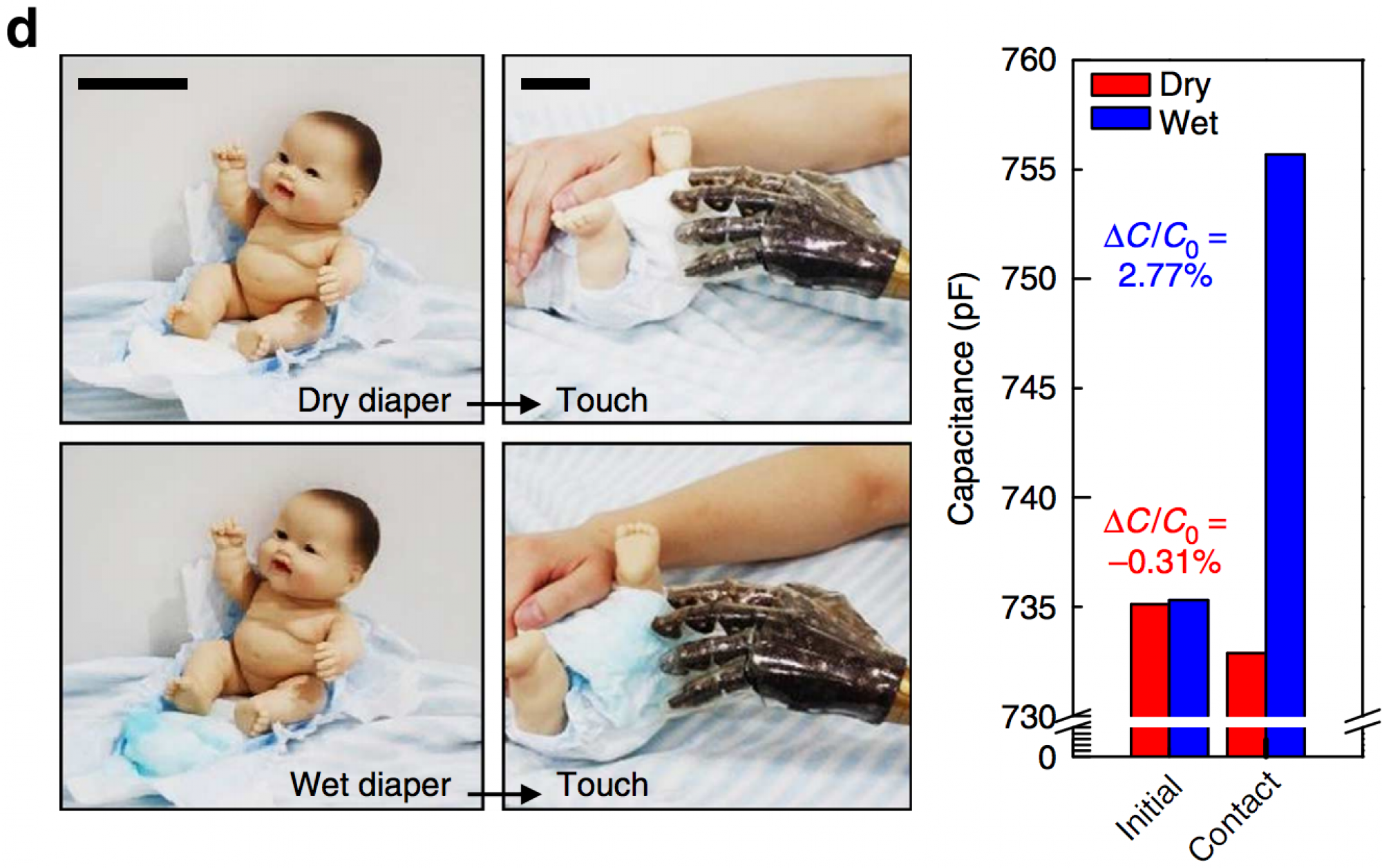
We’re one step closer to a future where prosthetic limbs will be synonymous with the real thing. Researchers from South Korea have created a stretchy, cybernetic skin that can sense pressure, temperature, and humidity and also generate heat, just real skin. They hope that one day the artificial skin will interface with the amputee’s nerves, to grant them feeling in their artificial limbs.
“The prosthetic hand and laminated electronic skin could encounter many complex operations such as hand shaking, keyboard tapping, ball grasping, holding a cup of hot or cold drink, touching dry or wet surfaces and human to human contact,” write the scientists in the study, published on December 9, 2014 in the journal Nature Communications .
Popular Science states that skin is primarily composed of a flexible, transparent silicone material called polydimenthylsiloxane, or PDMs, hence why it looks the way it does. Ultrathin single crystalline silicone nanoribbons embedded within the substrate generate electricity whenever they’re stretched or compressed to create tactile feedback; the nanoribbons also detect whether something is hot or cold. Wetness is detected through capacitors surrounded by a polymer whose ability to store a charge changes with the level of moisture; this change in charge is detectable by the capacitors. The paper explains, “This collection of stretchable sensors and actuators facilitate highly localized mechanical and thermal skin-like perception in response to external stimuli, thus providing unique opportunities for emerging classes of prostheses and peripheral nervous system interface technologies.” To produce the heating element that enables the artificial skin to emulate the warmth of human skin, the researchers incorporated a series of thermal actuators to control how much heat the artificial skin emits. These elements were tested by placing the hand on a plastic baby doll and measuring the amount of heat the hand transferred to the doll. Testing the humidity factor was twofold; first, involving a comparison between the artificial skin’s humidity readings and those of a commercial humidity sensor. Secondly, the researchers prodded various soiled diapers to determine if the smartskin could discern wet from dry diapers; both tests turned out successful.
To produce the heating element that enables the artificial skin to emulate the warmth of human skin, the researchers incorporated a series of thermal actuators to control how much heat the artificial skin emits. These elements were tested by placing the hand on a plastic baby doll and measuring the amount of heat the hand transferred to the doll. Testing the humidity factor was twofold; first, involving a comparison between the artificial skin’s humidity readings and those of a commercial humidity sensor. Secondly, the researchers prodded various soiled diapers to determine if the smartskin could discern wet from dry diapers; both tests turned out successful.
Zhenan Bao, a fellow artificial skin engineer from Stanford, who was is involved in the research, explained that combining temperature, pressure, and humidity sensors in a stretchy substrate was completely novel, as far as artificial skin is concerned. In fact, the stretchiness of the skin is adjusted by altering the shape of the silicon nanoribbon pattern within. For example, in the fingertips, the area of the skin that doesn’t need to stretch, the nanoribbons are tightly woven in a linear pattern for maximum sensitivity. By contrast, more flexible areas, such as the wrist, contain nanoribbons arranged in a loopy pattern that produces up to a 16 percent expansion.
Currently, the team is investigating the most efficient method of relaying the information from the artificial skin to the brain of the amputee. They’ve already succeeded in transferring pressure information from the skin into the brain of a rat.
Source: Nature Communications/ Pop Sci
By Max Teodorescu
Advertisement
Learn more about Electronic Products Magazine





